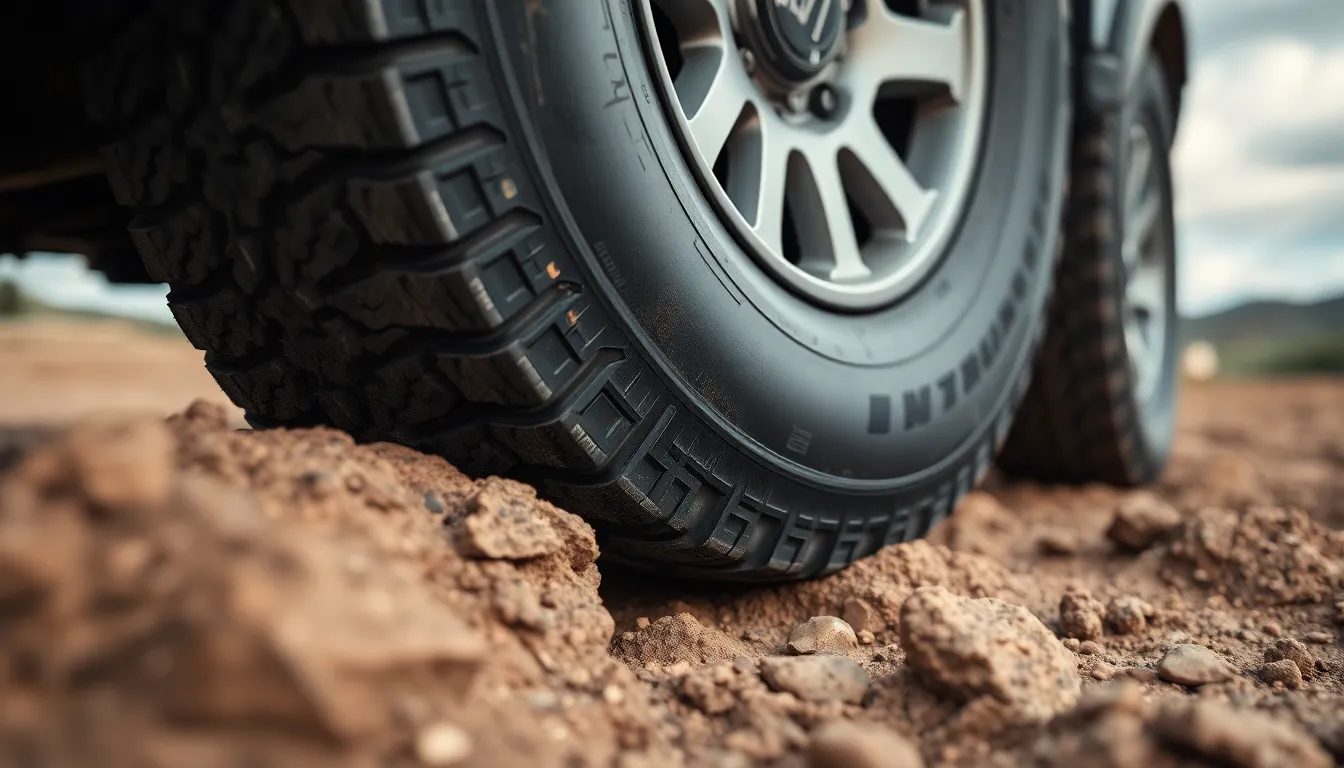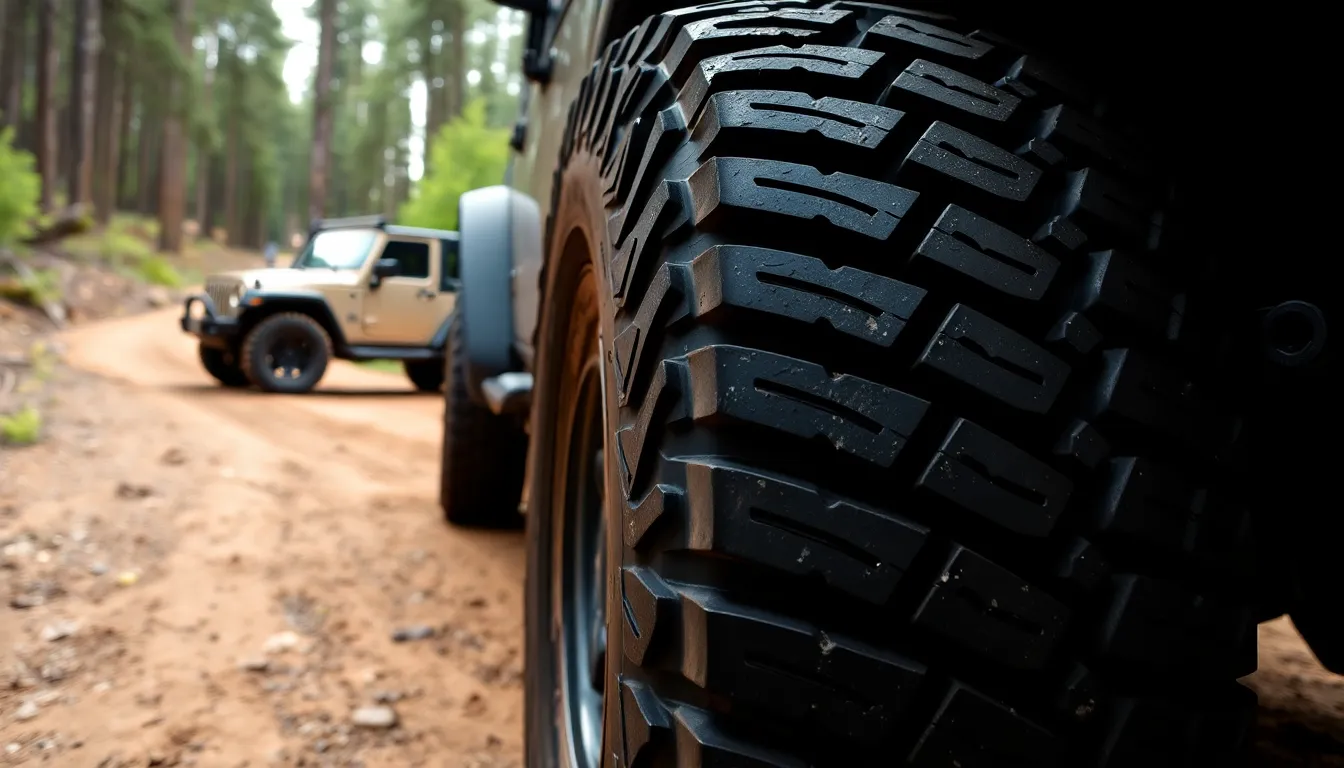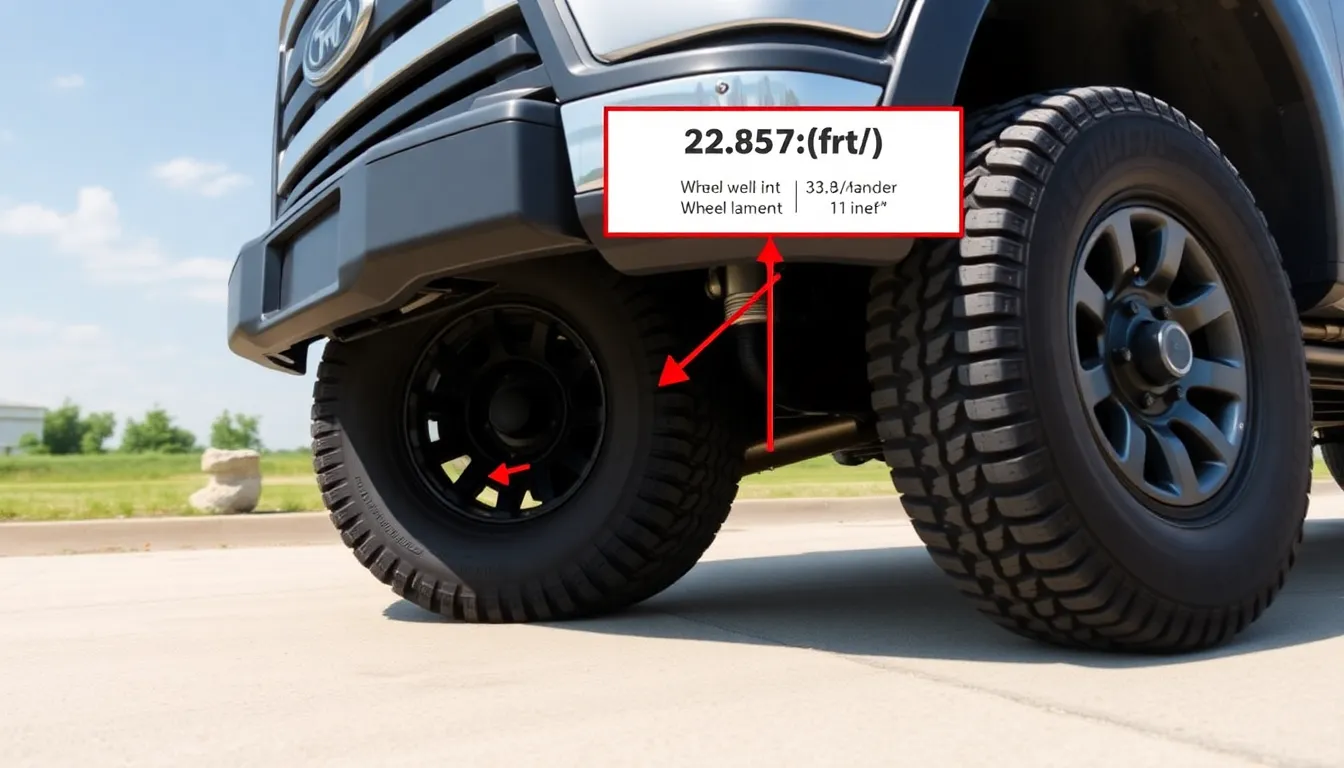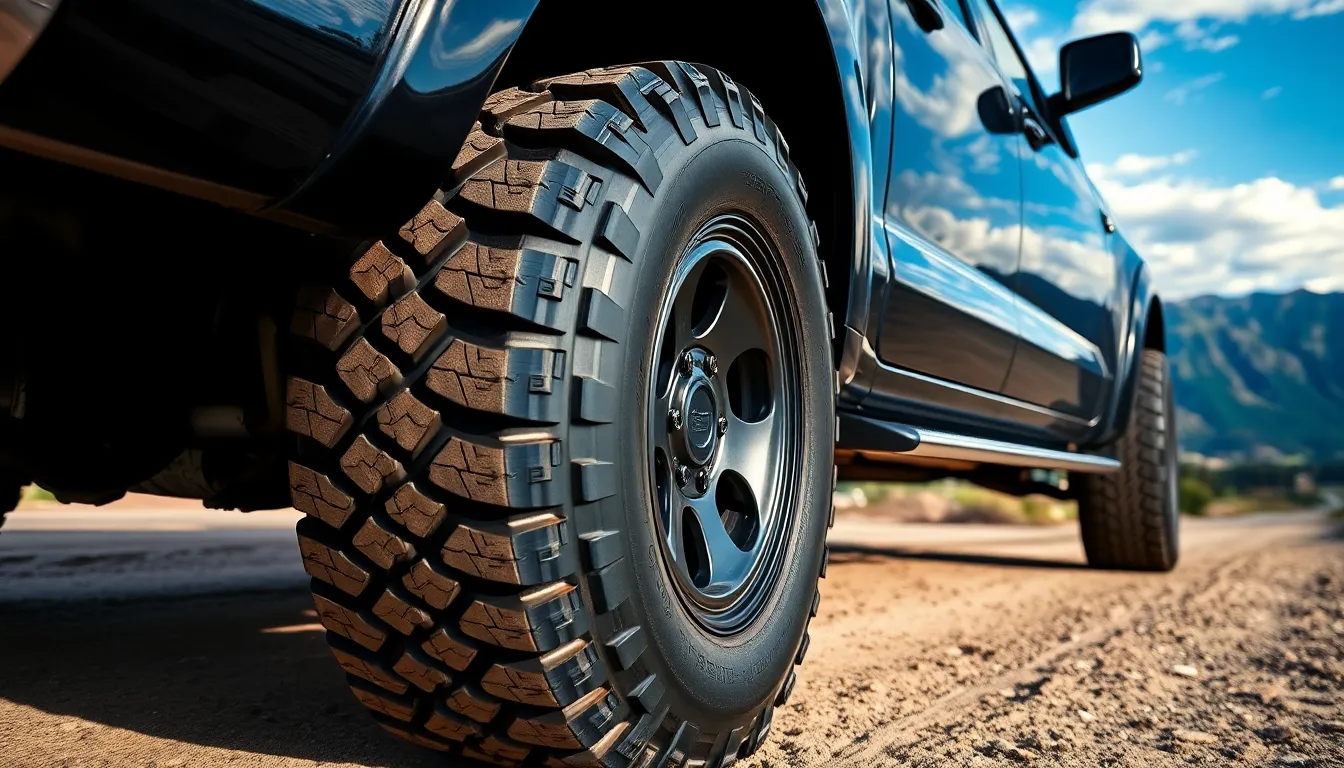When we’re shopping for new tires or upgrading our vehicle’s look we often encounter tire sizes that seem like a mysterious code. The 285 75 R17 specification is one of the most popular sizes for trucks and SUVs but understanding what these numbers actually mean in inches can make all the difference in our buying decisions.
We’ve all been there – staring at tire sidewalls wondering if we’re making the right choice for our vehicle’s performance and appearance. Converting tire measurements from metric to inches isn’t just about satisfying curiosity; it’s about ensuring we get the perfect fit for our driving needs and style preferences.
Whether we’re looking to maintain our vehicle’s original specifications or considering a size change for better off-road capability this comprehensive breakdown will transform those confusing numbers into clear measurements we can actually visualize and understand.
Understanding Tire Size Notation: 285/75R17 Breakdown
The 285/75R17 tire size follows a standardized international format that automotive manufacturers use across the globe. Each component of this designation tells us exact measurements and construction details about the tire.
What Each Number Represents
Breaking down the 285/75R17 specification reveals three critical measurements that determine tire dimensions and compatibility.
285 represents the tire width measured in millimeters from sidewall to sidewall when mounted on the recommended rim width. This measurement equals approximately 11.22 inches when converted from metric units.
75 indicates the aspect ratio as a percentage of the tire width. The sidewall height measures 75% of the 285mm width, creating a sidewall height of 213.75mm or roughly 8.42 inches.
R designates radial construction where tire cords run perpendicular to the direction of travel. Radial tires provide better fuel economy, longer tread life, and improved handling compared to bias-ply alternatives.
17 specifies the wheel diameter in inches that the tire fits. This measurement represents the inner diameter of the tire or the outer diameter of the compatible wheel rim.
Reading Tire Sidewall Markings
Tire sidewalls contain additional markings beyond the basic size designation that provide essential performance and safety information.
Load Index appears as a numerical code following the tire size, typically ranging from 70 to 126 for passenger vehicles. Each number corresponds to a exact weight capacity measured in pounds or kilograms.
Speed Rating follows the load index as a letter designation indicating maximum safe operating speed. Common ratings include S (112 mph), T (118 mph), H (130 mph), and V (149 mph).
DOT Code begins with “DOT” followed by a series of letters and numbers indicating manufacturing plant, tire size, and production date. The last four digits show the week and year of manufacture.
UTQG Ratings display treadwear grade, temperature resistance (A, B, or C), and traction grades (AA, A, B, or C) as mandated by the Department of Transportation for passenger tires.
Converting 285/75R17 to Inches

Converting 285/75R17 tire measurements from metric to inches provides precise dimensions for vehicle fitment and comparison purposes. We’ll break down each component to calculate the exact measurements you need.
Width Measurement in Inches
The first number 285 represents the tire’s width in millimeters across the tread face. Converting this metric measurement requires dividing by 25.4 since one inch equals 25.4 millimeters exactly. Our calculation shows 285 ÷ 25.4 = 11.22 inches for the tire width.
| Measurement | Value | Conversion |
|---|---|---|
| Width (mm) | 285 | 285 ÷ 25.4 |
| Width (inches) | 11.22 | Final result |
Sidewall Height Calculation
The aspect ratio of 75 indicates the sidewall height equals 75% of the tire’s width measurement. Multiplying our width of 11.22 inches by 0.75 gives us the sidewall height. This calculation produces 8.42 inches for each sidewall from the rim edge to the tread surface.
Sidewall height directly affects ride quality and handling characteristics of your vehicle. Taller sidewalls like this 8.42-inch measurement provide more cushioning over rough terrain but may reduce steering responsiveness compared to lower profile options.
Overall Diameter in Inches
Overall diameter combines both sidewalls plus the wheel diameter for the complete tire measurement. Adding two sidewalls (8.42 × 2 = 16.84 inches) to the 17-inch rim diameter produces our final calculation. The total overall diameter measures 33.84 inches or approximately 33.8 inches when rounded.
| Component | Measurement | Calculation |
|---|---|---|
| Sidewall height | 8.42 inches | × 2 |
| Both sidewalls | 16.84 inches | Combined |
| Rim diameter | 17 inches | Given |
| Overall diameter | 33.8 inches | Final total |
This 33.8-inch overall diameter affects speedometer accuracy and ground clearance when replacing factory tires with different sizes.
Comparing 285/75R17 to Common Tire Sizes

Comparing tire dimensions helps us make informed decisions when selecting replacements or upgrades for our vehicles. Understanding how the 285/75R17 measures against other popular sizes reveals important differences in performance characteristics.
| Tire Size | Diameter (inches) | Width (inches) | Circumference (inches) |
|---|---|---|---|
| 285/75R17 | 33.83 | 11.22 | 106.28 |
| 265/70R17 | 31.61 | 10.43 | 99.29 |
The 285/75R17 tire measures 2.22 inches larger in diameter compared to the 265/70R17 size. This difference translates to increased ground clearance and a more aggressive appearance on trucks and SUVs.
Standard vs. Metric Measurements
Converting between metric and standard measurements provides clarity when shopping for tires or discussing specifications with tire professionals. The 285/75R17 designation uses metric measurements for width (285mm) and percentage for aspect ratio (75%), while the rim diameter remains in inches (17).
Standard measurement systems express this tire size as approximately 34 x 11.2-17 or 34 x 11.5-17. These numbers represent the overall diameter, section width, and wheel diameter respectively. Tire professionals often use both systems interchangeably during consultations and installations.
Popular Alternative Sizes
Several tire sizes offer similar performance characteristics to the 285/75R17 while providing different fitment options. The 265/70R17 serves as a popular downsizing option that maintains the same wheel diameter but reduces overall tire dimensions.
Alternative sizes like the 315/75R16 provide larger diameter coverage with similar width characteristics on a 16-inch rim. This combination offers increased sidewall height for improved off-road performance and ride comfort. Each alternative size affects speedometer readings, fuel economy, and handling characteristics differently from the original 285/75R17 specification.
Vehicle Compatibility and Performance

Moving from tire measurements to practical applications, we explore how 285/75R17 tires perform across different vehicle types and driving conditions. These dimensions significantly influence both vehicle compatibility and real-industry performance characteristics.
Trucks and SUVs That Use 285/75R17
Popular truck models like the Ford F-150, Chevrolet Silverado, and Toyota Tacoma commonly accommodate 285/75R17 tires due to their robust construction and optimal sizing. These tires provide enhanced durability for heavy-duty applications while maintaining appropriate clearance within standard wheel wells. Compatibility varies significantly based on exact model years and trim levels, making verification essential before purchase.
Vehicle manufacturers often recommend approved wheel widths ranging from 7.5 to 9.5 inches for optimal tire mounting and performance. Trucks equipped with these tires benefit from improved load-carrying capacity and enhanced off-road traction. SUVs utilizing this tire size experience better ground clearance at 33.8 inches overall diameter compared to smaller alternatives.
Impact on Speedometer Accuracy
Speedometer readings change when upgrading to 285/75R17 tires from smaller factory specifications. Compared to 265/70R17 tires, the larger 106.2-inch circumference creates a 6.6% speedometer error that causes actual vehicle speed to exceed displayed readings. Drivers experience this discrepancy as traveling 6.6% faster than the speedometer indicates during normal operation.
Circumference differences directly affect odometer calculations and fuel economy estimates displayed on vehicle dashboards. GPS devices provide accurate speed readings that help drivers compensate for speedometer variations. Recalibration becomes necessary for precise speed monitoring when switching tire sizes significantly.
Load Rating and Weight Capacity
Load ratings for 285/75R17 tires vary among manufacturers, requiring exact tire specification verification for accurate weight capacity information. These tires typically handle heavy loads effectively, making them suitable for towing and hauling applications. Revolutions per mile calculations show 596 rotations, indicating the tire’s relationship between size and load distribution.
Weight capacity specifications depend on individual tire construction and manufacturer guidelines rather than universal standards. Commercial applications benefit from higher load ratings available in this tire size category. Proper load distribution remains critical for maintaining tire integrity and vehicle safety during heavy-duty operations.
Installation and Fitment Considerations

Installing 285/75R17 tires requires careful evaluation of your vehicle’s physical constraints and modification requirements. We’ve compiled essential clearance measurements and potential complications to ensure successful fitment.
Wheel Well Clearance Requirements
We recommend measuring wheel well clearance before installing 285/75R17 tires, as these 33.8-inch diameter tires exceed many factory specifications. Standard pickup trucks typically provide adequate clearance, but compact SUVs and lower-profile vehicles often require modifications.
Checking vertical clearance above the tire becomes critical when the suspension compresses during heavy loads or off-road driving. We measure from the tire’s highest point to the wheel well opening, ensuring at least 2 inches of clearance for safe operation.
Horizontal clearance between the tire sidewall and wheel well liner prevents damage during turning maneuvers. We verify this measurement with the wheels turned to full lock position, as the tire’s 11.2-inch width can interfere with narrow wheel wells.
Wheel spacers provide additional clearance when factory offset creates interference with suspension components or brake calipers. We calculate spacer thickness based on exact clearance requirements, typically ranging from 0.5 to 1.5 inches for most applications.
Potential Rubbing Issues
Suspension components present the most common rubbing points when installing oversized 285/75R17 tires. We inspect control arms, tie rod ends, and sway bar links for potential contact during suspension travel and steering input.
Body panel interference occurs frequently at the front and rear wheel wells, particularly during articulation or turning. We examine fender liners, mudflaps, and bumper corners for clearance issues that may require trimming or removal.
Frame rails and crossmembers can contact the tire sidewall when suspension components flex under load. We check these contact points with the vehicle loaded to simulate real-industry driving conditions.
Brake lines and ABS sensors occasionally interfere with larger tires, creating safety hazards that require immediate attention. We verify clearance around these components and relocate them when necessary to prevent damage or operational failures.
Conclusion
Understanding the 285/75R17 tire size in inches empowers us to make confident decisions about our vehicle’s performance and appearance. These measurements translate to an 11.22-inch width and 33.8-inch overall diameter that significantly impacts our truck or SUV’s capabilities.
We’ve covered the essential conversions and practical considerations that matter most when selecting these popular tires. From fitment requirements to speedometer adjustments the details we’ve explored help ensure successful tire upgrades.
Whether we’re maintaining factory specifications or pursuing enhanced off-road performance the 285/75R17 size offers excellent versatility for most truck applications. Armed with this knowledge we can confidently navigate tire shopping and installation decisions.
Frequently Asked Questions
What does 285/75R17 mean in tire sizing?
The 285/75R17 designation breaks down as follows: 285 represents the tire width in millimeters (11.22 inches), 75 is the aspect ratio meaning the sidewall height is 75% of the width (8.42 inches), R indicates radial construction, and 17 is the wheel diameter in inches. This sizing system helps determine fitment and performance characteristics.
How big is a 285/75R17 tire in inches?
A 285/75R17 tire measures approximately 11.22 inches wide with an overall diameter of 33.8 inches. The sidewall height is 8.42 inches. These measurements are important for determining if the tire will fit your vehicle without modifications and how it will affect ground clearance and speedometer accuracy.
What vehicles commonly use 285/75R17 tires?
Popular vehicles that use 285/75R17 tires include the Ford F-150, Chevrolet Silverado, Toyota Tacoma, and various other full-size trucks and SUVs. These tires are designed for heavy-duty applications and provide enhanced durability while maintaining appropriate clearance within standard wheel wells.
Will 285/75R17 tires affect my speedometer?
Yes, upgrading to 285/75R17 tires from smaller factory specifications can cause speedometer error. The larger diameter means your actual speed will be higher than what’s displayed on the speedometer. The exact difference depends on your original tire size, but it’s important to account for this change.
Do I need modifications to install 285/75R17 tires?
Installation depends on your vehicle’s wheel well clearance and suspension setup. These 33.8-inch diameter tires may require modifications on some vehicles, particularly compact SUVs. Check vertical and horizontal clearances to prevent rubbing against suspension components, body panels, or brake lines before installation.
What’s the difference between 285/75R17 and 265/70R17?
The 285/75R17 tire is approximately 2.22 inches larger in diameter than the 265/70R17. This results in increased ground clearance, a more aggressive appearance, and potentially improved off-road capability. However, the larger size may also affect fuel economy and require clearance modifications.
How much weight can 285/75R17 tires handle?
Load capacity varies by manufacturer and specific tire model, but 285/75R17 tires typically handle heavy loads effectively. Check the load index on your tire’s sidewall markings to determine the exact weight rating. Proper load distribution is critical for maintaining tire integrity and vehicle safety.










